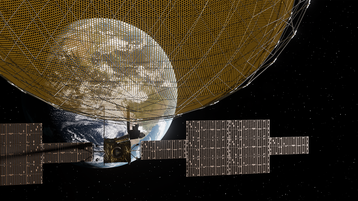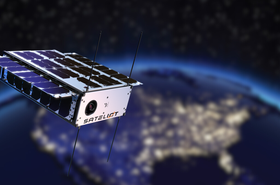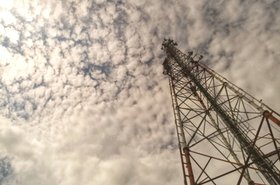Satellite operator Viasat is to enter its ViaSat-3 F1 satellite into service next quarter, despite the new machine offering far less bandwidth than planned after a deployment issue.
ViaSat-3 F1 is intended to be the first in a constellation of three geostationary Ka-band communications satellites. F1 is intended to cover the Americas, with future satellites covering the EMEA and APAC regions. The satellites are each expected to have a throughput of more than 1Tbps and download speeds of 100+ Mbps.
F1 was launched in May 2023 aboard a SpaceX rocket, but an "unexpected event” during reflector deployment hit its performance.
In an update this week, the company confirmed that it has determined that while the satellite payload is functional, it expects to recover less than 10 percent of the planned throughput on the machine.
However, despite this, the company has said it will not require a replacement satellite for F1. The addled satellite is due to enter service next quarter.
Viasat claimed the combination of its existing satellite fleet, the limited ViaSat-3 F1 capacity, the two other planned ViaSat-3 satellites yet to launch, ground network mitigations, and third-party bandwidth commitments means the company “remains confident” it will be able to meet the current and future needs of its mobility customers.
“During the quarter our antenna supplier completed its root cause investigation of the ViaSat-3 F1 antenna deployment anomaly,” the company said during its most recent quarterly update. “Based on its findings and recommendations, we are implementing several corrective actions on the ViaSat-3 F2 antenna. We expect to complete those actions as well as extensive testing and spacecraft integration by early calendar 2025 with launch expected shortly thereafter.”
The scheduled launch of ViaSat-3 F3 currently remains on track for Q4 2024. The F3 satellite has a different antenna design from a different supplier, and its schedule is not affected by the ViaSat-3 F1 issues.
Viasat also confirmed that it has insurance coverage of $420 million in place for ViaSat-3 F1 and will finalize its claim before the end of the year.
ViaSat subsidiary Inmarsat had a separate issue in August 2023 when its I6 F2 satellite suffered a "power subsystem anomaly" after launch, during its orbit-raising phase. Viasat closed its acquisition of Inmarsat earlier this year. The company also reaffirmed this week that it has insurance coverage of $348 million in place for the failed I6 F2 satellite and will finalize its claim before the end of the year.
In a separate quarterly update, the company said its insurance recovery claims are “proceeding well”, with some payments received in the last quarter and the majority anticipated to be paid in the coming year. In the subsequent earnings call, the company said it has received “more than $200 million” to date.
In Viasat’s most recent quarterly results – posted as Q3 fiscal 2024 – the company net loss of $124 million, up from a $47 million loss the previous year. However, revenue ($1.1 billion) and Adjusted EBITDA ($383 million) grew 8 percent and 11 percent Y-o-Y respectively, (inclusive of Inmarsat’s results in the prior year period).
The company has said it now expects to be cashflow positive by the first half of calendar 2025 – having previously said it would reach that point in the second half of 2025.
Viasat is forecasting capital expenditures in FY25 to decline from FY24 and to be in the range of $1.4 billion to $1.5 billion.
- In other recent satellite news, China Mobile has reportedly launched two experimental satellites in Low Earth Orbit (LEO) that will be used to test 5G and 6G architectures.







